焦碳酸二甲酯(DMPC) ,dimethyl dicarbonate ,97.0% (acidimetric)
产品编号:SIGMA-8187580100| CAS NO:4525-33-1| 分子式:C4H6O5| 分子量:134.0874
本网站销售的所有产品仅用于工业应用或者科学研究等非医疗目的,不可用于人类或动物的临床诊断或者治疗,非药用,非食用,
| 产品名称 | 焦碳酸二甲酯(DMPC) |
|---|---|
| 英文名称 | dimethyl dicarbonate |
| CAS编号 | 4525-33-1 |
| 产品熔点 | 15-17ºC |
| 产品沸点 | 171.4±0.0 °C at 760 mmHg |
| 产品密度 | 1.2±0.1 g/cm3 |
| 产品闪点 | 80.0±0.0 °C |
| 精确质量 | 134.021530 |
| PSA | 61.83000 |
| LogP | 0.42 |
| 蒸气压 | 1.4±0.3 mmHg at 25°C |
| 折射率 | 1.395 |
| 溶解性 | 35g/l (decomposition) |
| 稳定性 | 如果遵照规格使用和储存则不会分解,未有已知危险发生 避免强氧化剂,强碱 |
| 储存条件 | 密闭,阴凉干燥处保存,保持良好的通风 |
相关文档
化学品安全说明书(MSDS)
下载MSDS质检证书(COA)
相关产品
| 符号 |
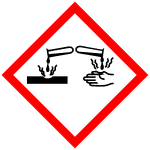
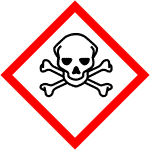
GHS05, GHS06 |
|---|---|
| 信号词 | Danger |
| 危害声明 | H302 + H312-H314-H330 |
| 警示性声明 | P260-P280-P284-P305 + P351 + P338-P310 |
| 个人防护装备 | Faceshields;full-face respirator (US);Gloves;Goggles;multi-purpose combination respirator cartridge (US);type ABEK (EN14387) respirator filter |
| 危害码 (欧洲) | T |
| 风险声明 (欧洲) | R21/22 |
| 安全声明 (欧洲) | 18-26-28-36/37/39-38-45 |
| 危险品运输编码 | UN 2927 6.1/PG 2 |
| WGK德国 | 3 |
| RTECS号 | HT0362500 |
| 包装等级 | II |
| 危险类别 | 6.1(a) |
| 海关编码 | 2920909090 |
|
Section 1. Chemical Product and Company Identification Dimethyl Dicarbonate Common Name/ Trade Name Manufacturer Commercial Name(s) Synonym
Chemical Name Chemical Family Dimethyl Dicarbonate Section 4. First Aid Measures Eye ContactCheck for and remove any contact lenses. In case of contact, immediately flush eyes with plenty of water for at least 15 minutes. Get medical attention. Skin ContactIn case of contact, immediately flush skin with plenty of water. Cover the irritated skin with an emollient. Remove contaminated clothing and shoes. Wash clothing before reuse. Thoroughly clean shoes before reuse. Get medical attention. Serious Skin ContactWash with a disinfectant soap and cover the contaminated skin with an anti-bacterial cream. Seek immediate medical attention. InhalationIf inhaled, remove to fresh air. If not breathing, give artificial respiration. If breathing is difficult, give oxygen. Get medical attention immediately. Serious InhalationNot available. IngestionDo NOT induce vomiting unless directed to do so by medical personnel. Never give anything by mouth to an unconscious person. If large quantities of this material are swallowed, call a physician immediately. Loosen tight clothing such as a collar, tie, belt or waistband. Serious IngestionNot available. Section 5. Fire and Explosion Data Flammability of the Product Combustible. Auto-Ignition Temperature Not available. Flash PointsCLOSED CUP: 80°C (176°F). Flammable LimitsNot available. Products of CombustionThese products are carbon oxides (CO, CO2). Fire Hazards in Presence of Flammable in presence of open flames and sparks, of heat. Various SubstancesNon-flammable in presence of shocks. Explosion Hazards in Presence Risks of explosion of the product in presence of mechanical impact: Not available. of Various SubstancesRisks of explosion of the product in presence of static discharge: Not available. Fire Fighting MediaSMALL FIRE: Use DRY chemical powder. and InstructionsLARGE FIRE: Use water spray, fog or foam. Do not use water jet. Special Remarks onNot available. Fire Hazards Special Remarks on Explosion Not available. Hazards Section 6. Accidental Release Measures Small SpillAbsorb with an inert material and put the spilled material in an appropriate waste disposal. Large SpillCombustible material. Keep away from heat. Keep away from sources of ignition. Stop leak if without risk. If the product is in its solid form: Use a shovel to put the material into a convenient waste disposal container. If the product is in its liquid form: Absorb with an inert material and put the spilled material in an appropriate waste disposal. Finish cleaning by spreading water on the contaminated surface and allow to evacuate through the sanitary system. Dimethyl Dicarbonate Section 7. Handling and Storage PrecautionsKeep locked up.. Keep away from heat. Keep away from sources of ignition. Ground all equipment containing material. Do not ingest. Do not breathe gas/fumes/ vapor/spray. Wear suitable protective clothing. In case of insufficient ventilation, wear suitable respiratory equipment. If ingested, seek medical advice immediately and show the container or the label. Avoid contact with skin and eyes. Keep away from incompatibles such as oxidizing agents, alkalis. StorageAir sensitive. Moisture sensitive Keep container in a cool, well-ventilated area. Keep container tightly closed and sealed until ready for use. Avoid all possible sources of ignition (spark or flame). Refrigerate. Do not store above 4°C (39.2°F). Section 8. Exposure Controls/Personal Protection Engineering ControlsProvide exhaust ventilation or other engineering controls to keep the airborne concentrations of vapors below their respective threshold limit value. Ensure that eyewash stations and safety showers are proximal to the work-station location. Personal ProtectionSplash goggles. Lab coat. Vapor respirator. Be sure to use an approved/certified respirator or equivalent. Gloves. Personal Protection in Case of Splash goggles. Full suit. Vapor respirator. Boots. Gloves. A self contained breathing apparatus should be a Large Spillused to avoid inhalation of the product. Suggested protective clothing might not be sufficient; consult a specialist BEFORE handling this product. Exposure LimitsNot available. Section 9. Physical and Chemical Properties Physical state and appearance Liquid.OdorNot available. TasteNot available. Not available. Molecular Weight ColorColorless. pH (1% soln/water)Not available. 45.5°C (113.9°F) Boiling Point Melting Point16°C (60.8°F) Not available. Critical Temperature Specific Gravity1.254 (Water = 1) Vapor PressureNot available. Vapor DensityNot available. VolatilityNot available. Odor ThresholdNot available. Water/Oil Dist. Coeff.Not available. Not available. Ionicity (in Water) Dispersion PropertiesNot available. SolubilityNot available. Dimethyl Dicarbonate Section 10. Stability and Reactivity Data The product is stable. Stability Instability TemperatureNot available. Heat, ignition sources (sparks, flames), air, moisture, incompatible materials Conditions of Instability Reactive with oxidizing agents, alkalis. Incompatibility with various substances CorrosivityNot available. Special Remarks onAir sensitive. Moisture sensitive Reactivity Special Remarks onNot available. Corrosivity PolymerizationWill not occur. Section 11. Toxicological Information Routes of EntryAbsorbed through skin. Eye contact. Inhalation. Toxicity to AnimalsAcute oral toxicity (LD50): 260 mg/kg [Rat]. Chronic Effects on Humans Not available. Other Toxic Effects onHazardous in case of skin contact (irritant), of ingestion, of inhalation. Humans Special Remarks onNot available. Toxicity to Animals Special Remarks onNot available. Chronic Effects on Humans Special Remarks on otherAcute Potential Health Effects: Toxic Effects on HumansSkin: Causes skin irritation. Eyes: Exposure to vapor or mist will cause eye irritation. Inhalation: Inhalationi of vapor or mist may be irritating to mucous membranes and upper respiratory tract. May affect behavior/central nervous system. Symptoms may include somnolence, tremor. May also affect respiratory system (dyspnea), and metabolism Ingestion: May cause gastrointestinal tract irritation. The toxicological properties of this substance have not been fully investigated. Section 12. Ecological Information EcotoxicityNot available. BOD5 and CODNot available. Products of BiodegradationPossibly hazardous short term degradation products are not likely. However, long term degradation products may arise. Toxicity of the ProductsThe products of degradation are less toxic than the product itself. of Biodegradation Special Remarks on theNot available. Products of Biodegradation Dimethyl Dicarbonate Section 13. Disposal Considerations Waste DisposalWaste must be disposed of in accordance with federal, state and local environmental control regulations. Section 14. Transport Information DOT ClassificationNot a DOT controlled material (United States). Not applicable. Identification Not applicable. Special Provisions for Transport DOT (Pictograms) Section 15. Other Regulatory Information and Pictograms TSCA 8(b) inventory: Dimethyl Dicarbonate Federal and State Regulations California Proposition 65 Warnings Other RegulationsOSHA: Hazardous by definition of Hazard Communication Standard (29 CFR 1910.1200). EINECS: This product is on the European Inventory of Existing Commercial Chemical Substances. WHMIS (Canada) Not controlled under WHMIS (Canada). Other Classifications DSCL (EEC)R22- Harmful if swallowed.S1/2- Keep locked up and out of the reach of R23- Toxic by inhalation.children. R36/38- Irritating to eyes and skin.S45- In case of accident or if you feel unwell, seek medical advice immediately (show the label where possible). S46- If swallowed, seek medical advice immediately and show this container or label. Health Hazard HMIS (U.S.A.)2 National Fire Protection 2 Flammability 2 Association (U.S.A.) Fire Hazard 2 0 Reactivity Health Reactivity 0 Specific hazard Personal Protection h WHMIS (Canada) (Pictograms) DSCL (Europe) (Pictograms) Dimethyl Dicarbonate TDG (Canada) (Pictograms) ADR (Europe) (Pictograms) Protective Equipment Gloves. Lab coat. Vapor respirator. Be sure to use an approved/certified respirator or equivalent. SECTION 16 - ADDITIONAL INFORMATION N/A |
|
~89% 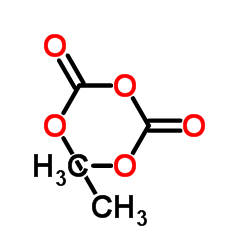
4525-33-1 |
| 文献:LANXESS DEUTSCHLAND GMBH Patent: US2007/213552 A1, 2007 ; Location in patent: Page/Page column 2 ; |



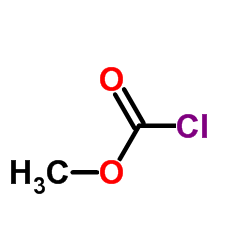
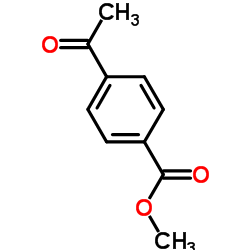

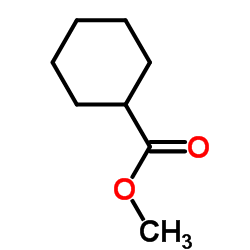
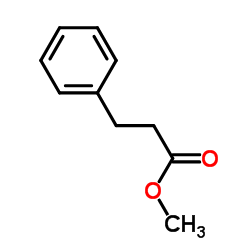

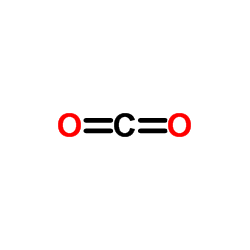

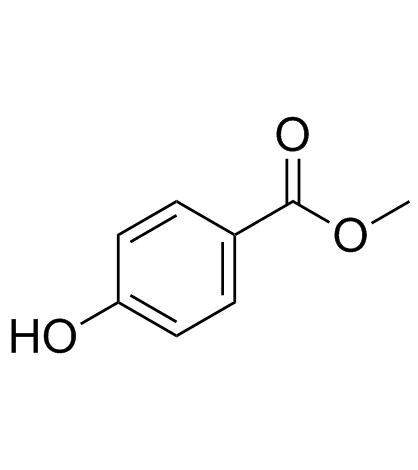





 浙公网安备 33010802013016号
浙公网安备 33010802013016号